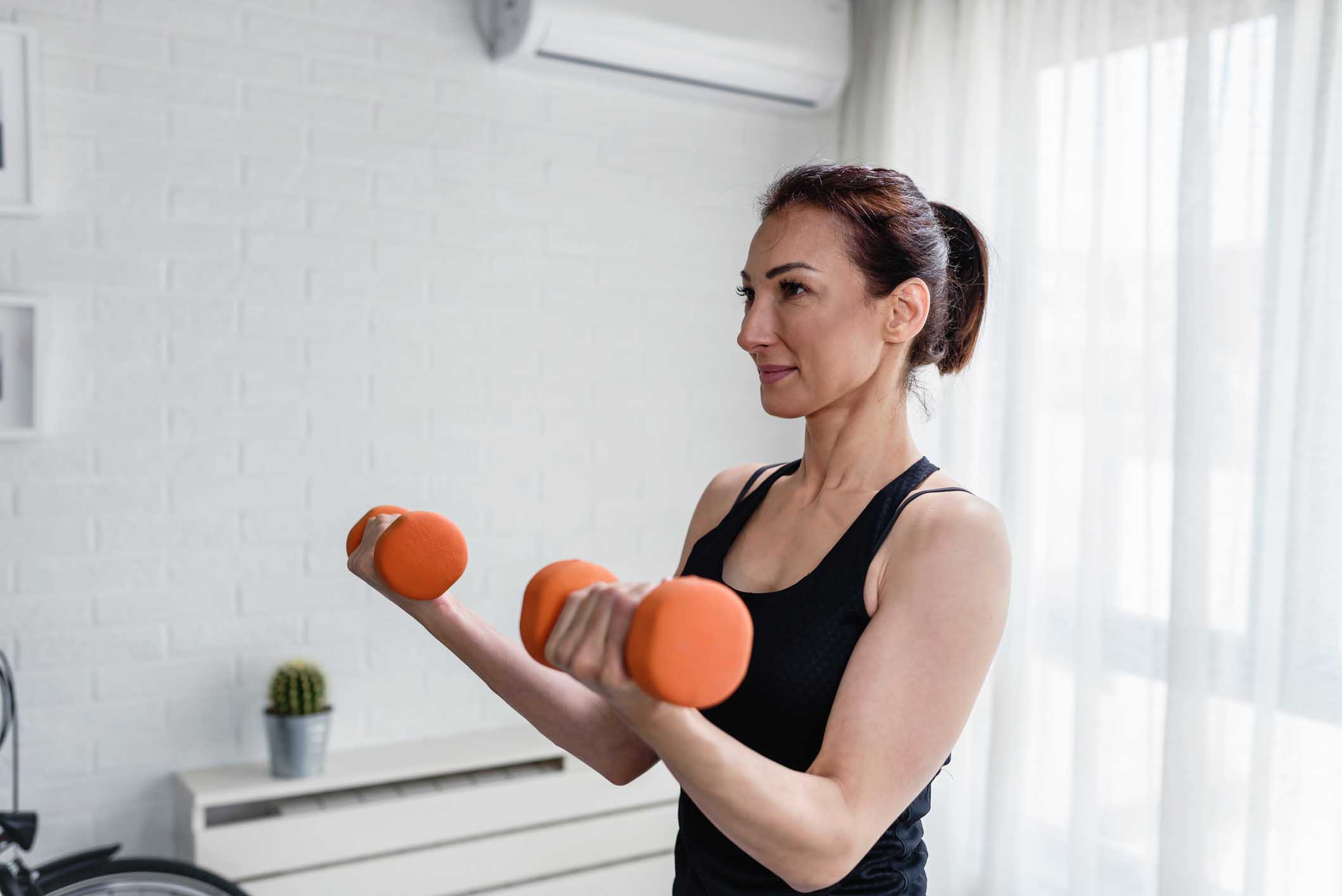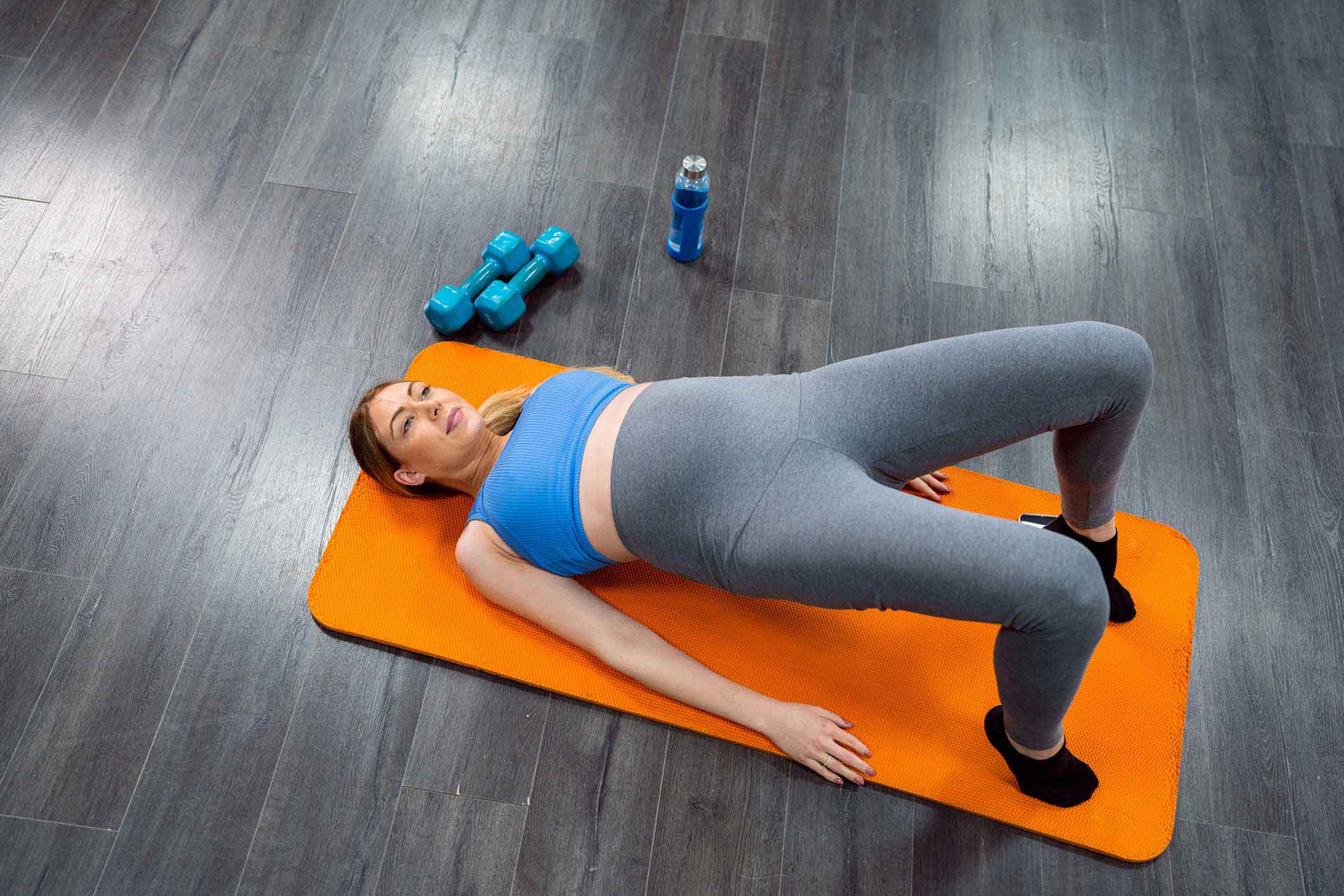Night Sweats & Hot Flashes? Try a Cooling Workout
Night Sweats & Hot Flashes? Try a Cooling Workout
Never too old or too young to feel hot, right? Sure, if it wasn't the other kind of hotness the type that wakes you up in the night with your hair all crazy frizzy and your pajamas soaked like you just worked out. And your sheets? Well, let's just say it reminds you of a kid who didn't make it to the bathroom in time. Welcome to the world of night hot flashes!
Many woman have experienced them at some point and the culprit is always the same: estrogen. This hormone makes you feel like a bombshell when you have plenty, but wiped out when levels drop.
Estrogen triggers hot flashes like this: when hormone levels fluctuate, they disrupt temperature regulation functions in the brain's hypothalamus, the region that controls body temperature along with hunger, sleep, and fatigue, according to Kimberly S. Perez, MA and Carol Ewing Garber, Ph.D. in Health and Fitness Journal.
Also, the decline of estrogen upsets the balance between norepinephrine and dopamine hormones linked to increase the flight fight response, such as alertness, increase heart rate, and stress. When these hormones are out of synch, your body can suddenly get revved up for no reason, which is why hot flashes feel like they come out of the blue.
Fat to Blame
Some studies have shown that women who embrace hormone therapy can see their sweaty times diminish or disappear. However, your hormones may not be the only problem. It also may be your extra pounds. A study published in The American Journal of Epidemiology, showed that abdominal fat was associated with increase odds of hot flashes. The more fat your have, the more you inhibit heat loss.
Not all women, regardless of their body fat and hormone levels, experience the intense sweats and flushed skin. About 70 to 80 percent of women in the United States experience hot flashes and night sweats during the menopausal transition and up to 25 percent of women in their 60s and 70s, according to the study.
Sweat the Right Way
If you're physically active, you may be among the happy ones who don't complain of bad moods after a night sweat one good sweat deactivates the other. Nevertheless, even if you workout, you may not be doing the right exercise to decrease or even prevent night hot flashes.
Studies have confirmed that aerobics are ideal for saying goodnight to night hot flashes. When you walk, pedal, run, and jump around on a regular basis, the body not only releases feel-good hormones, but also a potent vasodilator nitric oxide (NO) that has shown to have a role in the development of hot flashes. NO improves circulation by decreasing arterial stiffness. This creates a domino effect where more nutrients are delivered, which puts less pressure on the heart, lowering the heart rate and blood pressure, which then reduces hot flashes. Likewise, aerobic exercise increases blood flow to the muscles, which leads to stronger circulation and helps your body dissipate heat faster.
Duration and frequency of aerobic activity are important. A study by UKK Institute of Health Promotion Research, Finland found that sedentary women, aged 43-63 years with menopausal symptoms, improved sleep quality by 95 percent and significantly reduced night hot flashes after doing aerobic training four times a week for approximately 50 minutes.
Your Cooling Workout
Not all aerobics have to be on a treadmill or bike. You can achieve a good workout lifting light to moderate weights in a circuit fashion type meaning one exercise after another without rest selecting multi-joint exercises that work more than muscle at a time, and keeping your rest periods to 60 seconds or less.
So your exercise program can look like this: Monday and Wednesday walking, running, biking, elliptical, or stair master machine for 45 minutes at moderate intensity; Tuesday and Thursday a "cooling workout" that combines aerobics and resistance to tone and strengthen muscles at the same time, and also improves metabolism. A more active metabolism burns more calories and fat. And again, extra fat prevents heat loss.
Not only will this weekly routine help you sleep better and reduce night flashes, it can help you reduce body fat, tone muscles, and boost bone health for a whole-body workout. Now that's hot!
Recommended Products
Absorbency Level
Absorbency Level













